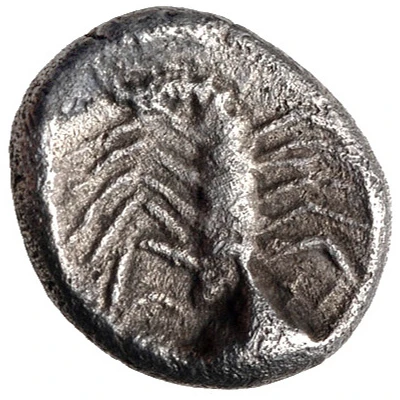


© Classical Numismatic Group, Inc.
Hemiobol 450 BC - 400 BC
| Silver | 0.52 g | 8.0 mm |
| Issuer | Mylasa (Caria) |
|---|---|
| Type | Standard circulation coin |
| Years | 450 BC - 400 BC |
| Value | Hemiobol (1⁄12) |
| Currency | Drachm |
| Composition | Silver |
| Weight | 0.52 g |
| Diameter | 8.0 mm |
| Shape | Round (irregular) |
| Technique | Hammered, Incuse |
| Orientation | Variable alignment ↺ |
| Demonetized | Yes |
| Updated | 2024-10-09 |
| Numista | N#150551 |
|---|---|
| Rarity index | 93% |
Reverse
Scorpion with tail to left within incuse square.
Interesting fact
The Hemiobol coin was used as a form of currency in ancient Greece, specifically in the city of Mylasa (Caria) during the 5th century BC. The coin features an image of a lion's head on one side and an inscription on the other side that reads "ΜΥΛΑΣΣΩΝ", which means "of Mylasa" in ancient Greek. The coin was made of silver and weighed approximately 0.52 grams. Despite its small size, the Hemiobol coin played an important role in the economy of ancient Mylasa and was used for everyday transactions.



